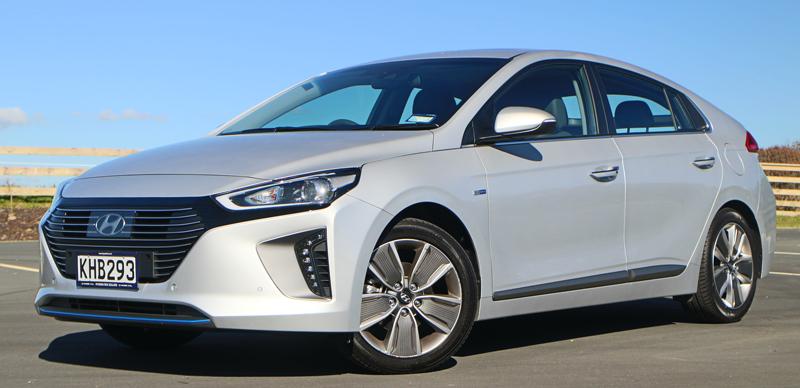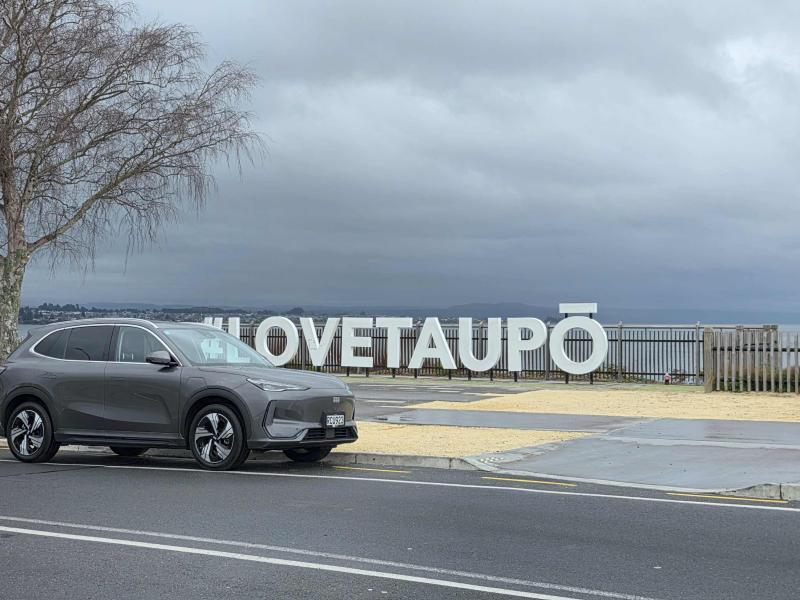Is the hybrid the plain sister of the range – or is it someone else? Damien O’Carroll investigates.
The hybrid version of Hyundai’s new Ioniq was always going to be something of the plain sister in the line-up, with the pure EV being the sexy headline grabber.
So it is somewhat ironic that it is actually the better looking of the two, dropping the EV’s big plastic in favour of a necessary traditional grille to cool the internal combustion engine.
As such, the Ioniq hybrid is sleek and handsome, and distinctly a Hyundai. Hyundai have gone out of their way to make the Ioniq look as conventional as possible, which will appeal to a lot of people who are tired of the “futuristic” hybrid/EV look that is prevalent these days.
Although, on the other hand, it also runs the risk of perhaps being slightly too conventional for people who want something that looks like a hybrid. Although from certain angles it still retains a traditional Prius-y look – you really can’t avoid that aerodynamic hybrid Kamm tail shape...
Inside the Ioniq is a modern and functional interior that looks very much like a normal car, as is the idea. It is even more conventional looking than the EV, but with equally high quality materials and build quality.
There is plenty of information available on the various screens, along with excellent Apple CarPlay integration and the ergonomics are all very well thought out and sensible.
While the seats are slightly on the firm side, they are still comfortable and supportive.
However the interior is all very grey, with very little colour or excitement, while the split rear window restricts visibility and the lack of a rear wiper is simply unforgivable.
On the road, the hybrid drive train is particularly frugal, with a surprising amount of throttle travel on electric power alone.
It is also impressively quiet and smooth, with both wind and road noise also being well damped.
The six-speed dual clutch transmission is impressive and gives the Ioniq a more “real car” feel than hybrids with continuously variable transmissions.
While the entire powertrain is impressively smooth, it can be quite sluggish off the mark, meaning the Ioniq isn’t that hot away from intersections.
Despite the fact that it is wonderfully comfortable, with a nicely composed and refined ride, the Ioniq boasts a surprisingly agile chassis and nicely responsive steering.
Through a corner the Ioniq boasts a surprisingly high amount of grip and remains nicely poised and confident throughout, which is a surprise because no one really expects a hybrid to be a great handler. And the Ioniq’s powertrain certainly subscribes to that theory.
Well it is impressively frugal, as well as smooth and quiet around town the Ioniq’s powertrain can’t do justice to the chassis’ surprisingly impressive open road abilities.
Making a complaint like that is actually entirely missing the point of a car like the Ioniq – it is made for around town motoring and it does that exceptionally well.
Comfortable smooth quiet and extraordinarily well-equipped the Ioniq hybrid represents remarkable value for money and makes the car that came that inspired it (rather obviously, the Toyota Prius) looks almost ridiculously expensive in comparison.
_________
Specifications
Body type Hatchback
Drive FWD
Engine type Inline 4-cylinder pet hybrid
Engine capacity 1.6-litre
Max power 104kW
Max torque 265Nm
l/100km (Combined) 3.9L/100km
C02 emissions 90g/km
Boot capacity 674 L
Spare tyre Tyre Kit
ANCAP rating 5 Star
Price $52,990






